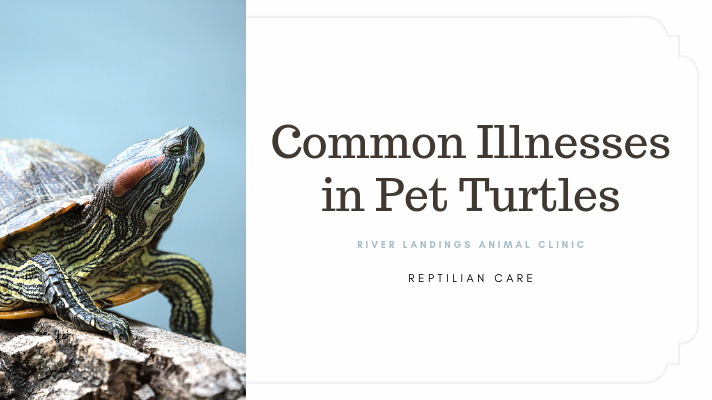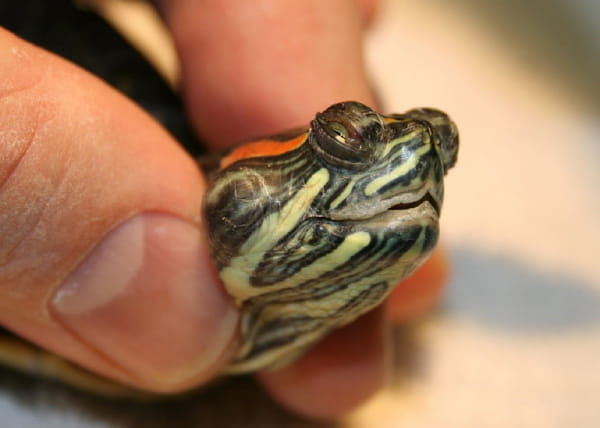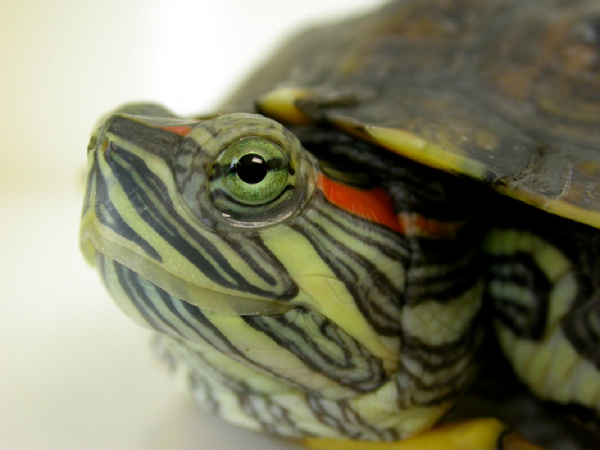So, you’ve recently adopted a baby turtle and you want to make sure it stays healthy and happy. Well, you’ve come to the right place! In this article, we’ll give you some tips on how to recognize and treat common viral infections that baby turtles can suffer from. By being aware of the signs and taking the necessary steps, you can ensure that your little shelled friend stays in great shape. So let’s get started and learn how to keep those baby turtles virus-free!
Recognizing Common Viral Infections
Identifying Symptoms
When it comes to recognizing common viral infections in baby turtles, it’s important to be aware of the various symptoms that may indicate an infection. Some common symptoms to watch out for include respiratory distress, such as abnormal breathing or wheezing, loss of appetite, lethargy, and abnormal growth or shell deformities. Additionally, if you notice any changes in behavior, such as increased aggression or nesting behavior, it may also be a sign of a viral infection. It’s essential to observe your baby turtle closely and look out for any unusual signs or behaviors that may indicate an underlying viral infection.
Observing Behavioral Changes
In order to accurately recognize common viral infections in baby turtles, it’s crucial to pay attention to any changes in their behavior. Viral infections can often cause behavioral changes in turtles, ranging from increased aggression to withdrawal and apathy. If you notice your baby turtle becoming unusually aggressive, or if they are not as active or interactive as usual, it may be a sign of a viral infection. Similarly, nesting behavior or a sudden change in their daily routine can also indicate that something is not right. By being attentive to these behavioral changes, you can help identify and address potential viral infections early on.
Examining Physical Appearance
Examining the physical appearance of baby turtles can offer valuable insight into whether they may be suffering from a viral infection. Common physical symptoms of viral infections can include abnormal growth or shell deformities, skin lesions or discoloration, and swollen or cloudy eyes. It’s important to regularly inspect your baby turtle’s body, paying close attention to their shell, eyes, skin, and overall body condition. Any noticeable changes in their physical appearance should not be ignored, as they may be indicative of an underlying viral infection. By conducting regular physical examinations, you can promptly identify and address viral infections in baby turtles.
Treating Common Viral Infections
Seeking Veterinary Assistance
If you suspect that your baby turtle may be suffering from a viral infection, it is imperative to seek veterinary assistance. A veterinarian with experience in reptile medicine will be able to properly diagnose the infection and recommend appropriate treatment options. They may conduct various tests, such as blood work or swabs, to determine the specific virus affecting your turtle. The expertise and guidance of a veterinarian are crucial in effectively treating common viral infections in baby turtles.
Isolating Infected Turtles
When it comes to treating viral infections in baby turtles, it’s essential to prevent the infection from spreading to other turtles. As soon as a viral infection is suspected or confirmed, the infected turtle should be isolated from the rest of the population. This helps minimize the risk of transmission and allows for focused treatment and care. Isolation can be achieved by housing the infected turtle in a separate enclosure with appropriate heating, lighting, and sanitation measures. Remember to thoroughly clean and disinfect any equipment or accessories used with the infected turtle to avoid spreading the infection.
Providing Supportive Care
Supportive care plays a crucial role in the treatment of common viral infections in baby turtles. This involves providing the infected turtle with a suitable and stress-free environment, ensuring proper nutrition and hydration, and maintaining optimal temperature and humidity levels. It’s important to monitor the turtle’s appetite, as baby turtles with viral infections may experience a loss of appetite. In such cases, offering easily digestible and nutritious food options, such as small pieces of safe vegetables or commercially available reptile diets, can help maintain their strength and aid in recovery. Additionally, keeping the turtle’s enclosure clean and comfortable can contribute to their overall well-being and aid in their recovery from the viral infection.
Preventing Viral Infections
Maintaining a Clean Environment
Maintaining a clean environment is crucial for preventing viral infections in baby turtles. Regularly cleaning and disinfecting their enclosure, including the substrate, water dish, and any other accessories, helps minimize the risk of infections. Use reptile-safe cleaning products and follow the recommended guidelines for effective disinfection. Additionally, it’s important to provide proper filtration and water quality management in aquatic turtle setups to prevent the accumulation of harmful bacteria and viruses. By keeping the environment clean, you can significantly reduce the chances of viral infections in baby turtles.
Implementing Quarantine Procedures
Implementing quarantine procedures is essential, especially when introducing new turtles to an existing population. Quarantine allows for the early detection and isolation of any potentially infected turtles, preventing the spread of viruses to the rest of the population. Newly acquired turtles should be quarantined for a minimum of six weeks, during which time they should be closely monitored for any signs of illness. It’s important to keep the quarantined turtles in a separate enclosure, away from the rest of the turtles, and to practice proper hygiene to prevent cross-contamination. By implementing quarantine procedures, you can effectively prevent the introduction and spread of viral infections in your baby turtle population.
Monitoring Turtles’ Health Regularly
Regular monitoring of your baby turtles’ health is essential for early detection and treatment of viral infections. This includes observing their behavior, physical appearance, and appetite on a daily basis. By being observant and proactive, you can quickly identify any changes or abnormalities in your turtles’ health and take immediate action. Regular veterinary check-ups are also recommended to ensure that your turtles are in good health and to address any potential health concerns before they escalate. By monitoring your turtles’ health regularly, you can intervene promptly and effectively manage viral infections, if they occur.
Understanding Herpesvirus Infection
Herpesvirus and Its Effect on Baby Turtles
Herpesvirus is a common viral infection that can affect baby turtles. It is highly contagious and can cause various health issues, such as respiratory problems, skin lesions, shell deformities, and even death. The herpesvirus infection can be particularly dangerous for young turtles with weaker immune systems. It is important to be aware of the potential impact of herpesvirus on baby turtles and to take appropriate preventive measures.
Clinical Signs of Herpesvirus Infection
Recognizing the clinical signs of herpesvirus infection is crucial for early detection and treatment. Common signs include respiratory distress or abnormal breathing, such as wheezing or gasping for air, excessive mucous production, swollen or cloudy eyes, skin lesions, and abnormalities in shell growth. Baby turtles may also exhibit lethargy, loss of appetite, or abnormal behavior. If you notice any of these signs in your baby turtle, it is important to seek veterinary assistance promptly.
Treatment Options for Herpesvirus Infection
While there is no cure for herpesvirus in turtles, supportive care is the primary treatment approach. This involves creating a stress-free environment with proper temperature and humidity levels, maintaining good water quality, and providing a nutritious diet. Additionally, your veterinarian may prescribe antiviral medications to help manage the symptoms and prevent secondary infections. Regular veterinary check-ups and monitoring are essential to ensure the infected turtle’s overall well-being and to address any changes in their condition. By providing comprehensive care and support, you can help improve the quality of life for turtles infected with herpesvirus.
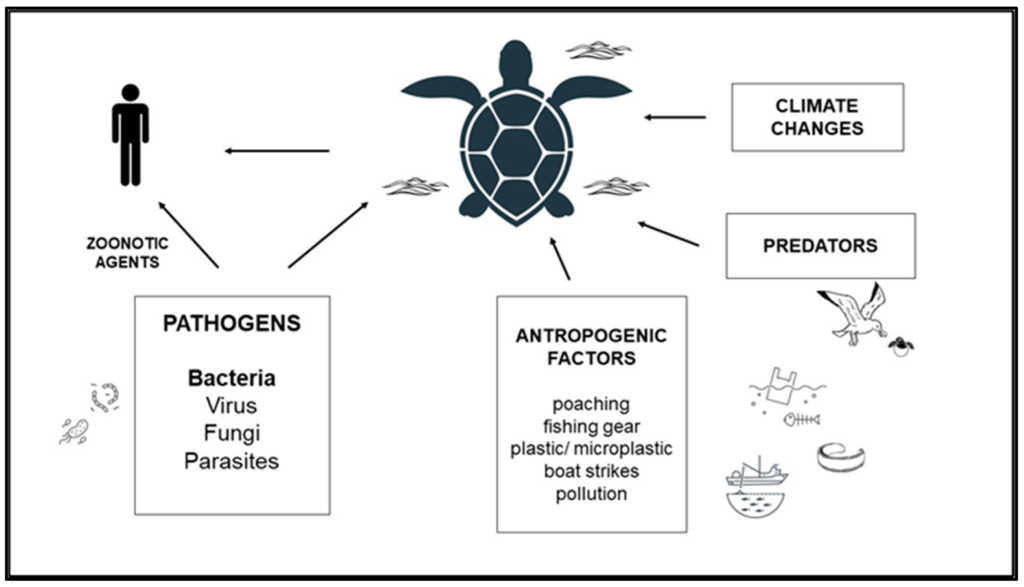
Recognizing and Treating Ranavirus Infection
Ranavirus and Its Impact on Baby Turtles
Ranavirus is another common viral infection that can have a significant impact on baby turtles. It primarily affects the respiratory and digestive systems, causing symptoms such as mouth and cloaca sores, lethargy, loss of appetite, and swollen limbs. Ranavirus can be extremely contagious and has been known to cause mass die-offs in turtle populations. Prompt recognition and treatment are essential to minimize the spread and impact of ranavirus infections.
Signs and Symptoms of Ranavirus Infection
Recognizing the signs and symptoms of ranavirus infection is crucial for early intervention. In addition to mouth and cloaca sores, baby turtles infected with ranavirus may display abnormal swimming behavior, such as floating or sinking, and may have swollen or discolored limbs. They may also exhibit breathing difficulties, lethargy, and a sudden loss of appetite. If you observe any of these symptoms in your baby turtle, it is important to seek veterinary assistance immediately.
Treatment Methods for Ranavirus Infection
Unfortunately, there is no cure for ranavirus in turtles. Treatment primarily involves supportive care and symptomatic management. This includes maintaining proper temperature and humidity levels, ensuring the turtle has access to clean and properly treated water, and providing a balanced diet. Your veterinarian may also prescribe medications to manage symptoms and prevent secondary infections. It is important to closely monitor the turtle’s condition and seek veterinary advice if there are any changes or worsening of symptoms. By providing appropriate care and support, you can help improve the turtle’s quality of life and potentially increase the chances of recovery.
Dealing with Adenovirus Infection
Adenovirus and Its Effect on Baby Turtles
Adenovirus is a viral infection that can affect various organ systems in baby turtles, including the respiratory, gastrointestinal, and reproductive systems. It can cause symptoms such as respiratory distress, diarrhea, lethargy, and reproductive issues. Adenovirus infection in baby turtles can be challenging to diagnose and treat, so early recognition and intervention are crucial.
Signs and Symptoms of Adenovirus Infection
Recognizing the signs and symptoms of adenovirus infection can aid in early detection. Baby turtles infected with adenovirus may exhibit respiratory distress, such as gasping for air or abnormal breathing patterns. Gastrointestinal symptoms can include diarrhea, weight loss, and loss of appetite. Additionally, changes in reproductive behavior or abnormalities in egg production can also be indicative of adenovirus infection. If you observe any of these signs in your baby turtle, it is important to consult with a veterinarian experienced in reptile medicine.
Approaches to Treat Adenovirus Infection
Currently, there is no cure for adenovirus in turtles. Treatment primarily focuses on supportive care, including maintaining proper temperature and humidity levels and providing a balanced and nutritious diet. Your veterinarian may prescribe medications to manage symptoms, such as respiratory distress or diarrhea, and prevent secondary infections. It is crucial to closely monitor the turtle’s condition and seek veterinary advice if there are any changes or worsening of symptoms. By providing appropriate care and support, you can help alleviate the turtle’s discomfort and improve their overall quality of life.
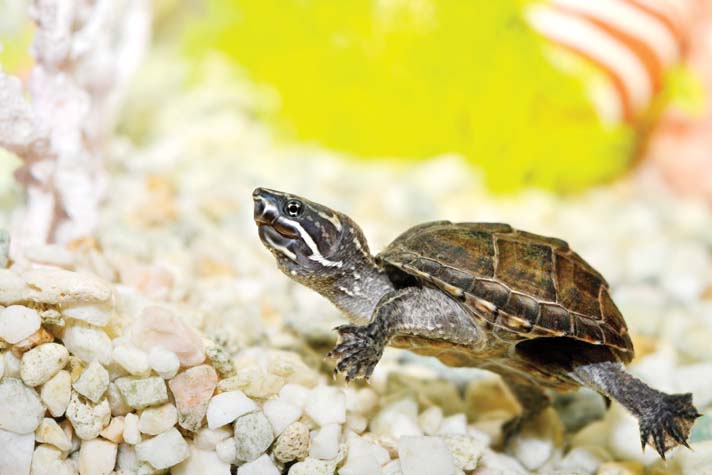
Managing Poxvirus Infection in Baby Turtles
Poxvirus and Its Effects on Baby Turtles
Poxvirus is a viral infection that can affect baby turtles, often causing skin lesions and growths. It is highly contagious and can spread rapidly within turtle populations. Poxvirus infection can be particularly damaging to young turtles with compromised immune systems, and prompt recognition and management are essential to prevent its spread and minimize its impact.
Common Signs of Poxvirus Infection
Recognizing the common signs of poxvirus infection is crucial for early intervention. Baby turtles infected with poxvirus may develop skin lesions or growths that can range in size, color, and texture. These growths may appear on the shell, skin, or even the eyes, potentially obstructing vision and impairing the turtle’s ability to move or eat. Infected turtles may also exhibit lethargy, loss of appetite, and abnormal behavior. If you notice any of these signs in your baby turtle, it is important to seek veterinary assistance promptly.
Treatment Options for Poxvirus Infection
Currently, there is no specific cure for poxvirus in turtles. Treatment primarily involves supportive care and management of symptoms. This includes maintaining proper temperature and humidity levels, providing a clean and stress-free environment, and ensuring a nutritious diet. Your veterinarian may prescribe medications to manage secondary bacterial infections or address specific symptoms. It is important to regularly monitor the turtle’s condition, follow the veterinarian’s guidance, and seek veterinary advice if there are any changes or worsening of symptoms. By providing comprehensive care and support, you can help improve the turtle’s quality of life and potentially minimize the impact of poxvirus infection.
Learning About Papillomavirus Infection
Papillomavirus and Its Impact on Baby Turtles
Papillomavirus is a viral infection that primarily affects the skin and mucous membranes of baby turtles. It can lead to the development of skin tumors or papillomas, which can be either benign or malignant. The presence of papillomavirus in a turtle population can have serious health implications and can impact their overall well-being. Understanding the potential impact of papillomavirus is crucial for effective management.
Signs and Symptoms of Papillomavirus Infection
Recognizing the signs and symptoms of papillomavirus infection can aid in early detection and treatment. Baby turtles infected with papillomavirus may develop skin tumors or papillomas, which can vary in size, shape, and texture. These growths may appear on the skin, extremities, or even the oral cavity, potentially causing difficulties in feeding or breathing. Affected turtles may also exhibit lethargy, changes in behavior, or loss of appetite. If you observe any of these signs in your baby turtle, it is important to consult with a veterinarian experienced in reptile medicine.
Treatment Methods for Papillomavirus Infection
Treatment options for papillomavirus infection in turtles are limited. In many cases, surgery is the primary approach to remove the tumors or papillomas. However, the success of surgery depends on various factors, including the size and location of the growths. Other treatment options, such as cryotherapy or laser therapy, may also be considered in certain cases. Your veterinarian will create a treatment plan tailored to your turtle’s specific needs and monitor their condition closely. It is important to follow the veterinarian’s guidance and regularly monitor the turtle’s health for any changes or recurrence of the growths. By providing appropriate care and treatment, you can help improve the turtle’s quality of life and potentially manage the impact of papillomavirus infection.
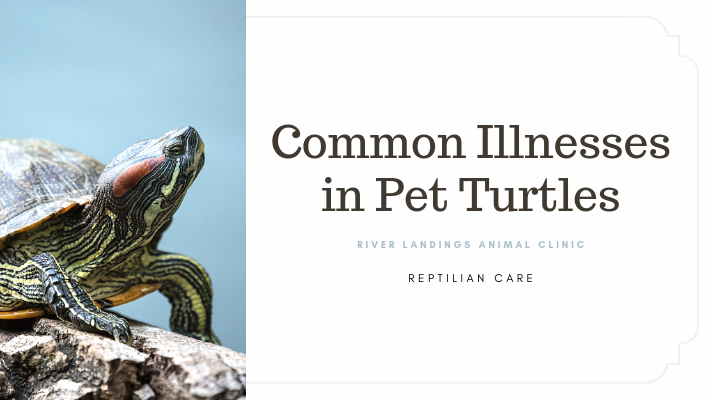
Examining the Effect of Paramyxovirus Infection
Paramyxovirus and Its Effect on Baby Turtles
Paramyxovirus is a viral infection that can affect various organ systems in baby turtles, including the respiratory, gastrointestinal, and nervous systems. It can cause symptoms such as respiratory distress, neurologic abnormalities, lethargy, and loss of appetite. Paramyxovirus infection in baby turtles can be challenging to manage, so early recognition and intervention are crucial.
Identifying Symptoms of Paramyxovirus Infection
Identifying the symptoms of paramyxovirus infection is important for early detection and treatment. Baby turtles infected with paramyxovirus may exhibit respiratory distress, including abnormal breathing patterns or wheezing. Neurologic abnormalities can include tremors, head tilting, or seizures. Lethargy and loss of appetite are also common signs. If you observe any of these symptoms in your baby turtle, it is important to seek veterinary assistance promptly.
Treatment Approaches for Paramyxovirus Infection
Currently, there is no specific cure for paramyxovirus in turtles. Treatment primarily involves supportive care and management of symptoms. This includes providing a clean and stress-free environment with proper temperature and humidity levels, maintaining good water quality, and ensuring a nutritious diet. Your veterinarian may also recommend medications to manage symptoms, such as respiratory distress or neurologic abnormalities. It is important to closely monitor the turtle’s condition and seek veterinary advice if there are any changes or worsening of symptoms. By providing comprehensive care and support, you can help improve the turtle’s quality of life and potentially minimize the impact of paramyxovirus infection.
Addressing Retrovirus Infection in Baby Turtles
Retrovirus and Its Effects on Baby Turtles
Retrovirus is a viral infection that can have a significant impact on baby turtles by compromising their immune system and making them more susceptible to other infections. Retrovirus infection can manifest as a wide range of symptoms, including respiratory distress, shell abnormalities, and overall poor health. Addressing retrovirus infection is crucial to ensure the well-being and longevity of baby turtles.
Signs and Symptoms of Retrovirus Infection
Recognizing the signs and symptoms of retrovirus infection is essential for early intervention. Baby turtles infected with retrovirus may exhibit respiratory distress, such as wheezing or gasping for air. They may also display abnormalities in shell growth or shell deformities. Additionally, retrovirus-infected turtles may have poor overall health, including weakened immune systems, weight loss, or slow growth. If you notice any of these signs in your baby turtle, it is important to consult with a veterinarian experienced in reptile medicine.
Treatment Options for Retrovirus Infection
Unfortunately, there is no cure for retrovirus in turtles. Treatment primarily focuses on supportive care and management of symptoms. This includes creating a stress-free environment with proper temperature and humidity levels, maintaining good water quality, and providing a nutritious diet. Your veterinarian may also recommend medications or supplements to support the immune system and overall health of the turtle. It is important to regularly monitor the turtle’s condition, follow the veterinarian’s guidance, and seek veterinary advice if there are any changes or worsening of symptoms. By providing appropriate care and support, you can help improve the turtle’s quality of life and potentially minimize the impact of retrovirus infection.
By being vigilant and knowledgeable about viral infections in baby turtles, you can play a crucial role in recognizing, treating, and preventing these infections. From identifying symptoms and behavioral changes to implementing proper treatment methods, taking care of baby turtles infected with viral diseases requires a comprehensive and proactive approach. By prioritizing the health and well-being of your baby turtles and seeking veterinary assistance when necessary, you can help ensure a happy and healthy life for these beloved reptiles.
